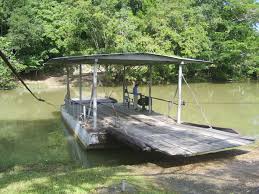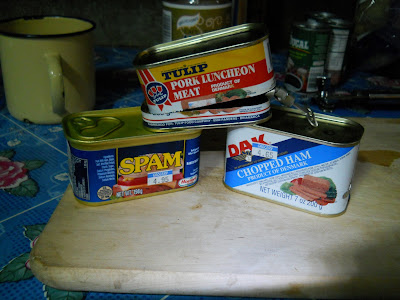Hope you enjoyed the tour, so far! As I explained at the very beginning, I am an archaeologist and I study these types of sites every summer. I am going to tell you a little bit about what I do every summer, so you have an idea of what an archaeologist does.
Before I Leave for Belize
So, first, I have to figure out what I want to study. Archaeology is the study of ancient humans, so I could study nearly anything! Instead, I focus on craft production and architecture. So, I study the houses the Maya built and the things they made to be sold to other people. After I figure out what I want to study, I have to design a research plan that says exactly what I will do. This research plan will say where I want to dig, what I hope to accomplish by digging there, and what I will do with the stuff I dig up. Then, of course, I have to find a way to pay for all of that to happen!
Where I stay in Belize
Finally, I’m in Belize! Sometimes, I stay in a log-building in the middle of a forest preserve with no running water or electricity other times I stay in an old eco hostel near a large village. No matter where I stay I manage to find parasites, poisonous insects, and poisonous trees. But, not to worry! This just means I need to itch
or other unfortunate things a lot when I am digging. ^.^
Here is where I stayed during my first two summers of field work.

Imagine sharing latrines with over 100 people for nearly two months. o.0

And this is essentially how we looked walking to work every day. I only had to travel for about twenty minutes to get to my work area, but others had to walk down a steep incline for an hour.
Xunantunich
Now I work at Xunantunich in a different area of Belize.
Here is where I dig!

That's a site map of a small portion of Xunantunich. I work in a different area.
Xunantunich is a medium-sized archaeological site in Belize. It is a fairly popular tourist destination. All you need to do is cross a ferry, ride up a hill, and you are in an amazing, cleared site with tons of things to do and explore. Don’t worry, you won’t have to deal with anything that’ll bite, because the area is cleared where you’d be going.
I conduct my research at Group E, a portion of Xunantunich that was built really early before the rest of the site. So, the Maya built Group E, left Group E to build the big part of Xunantunich, and then some of them came back later to build houses amongst their deceased ancestors. That last group of people are who I am studying. I want to know why they came back and what they were doing.

The ferry to cross the river to Xunantunich.
What I Do In Belize - Mostly Digging
Usually, I have some undergraduate students or locals who live in the village to help me out. They do a lot of the digging while I write almost all of the notes (last season – about 70 pages worth of notes). The students are learning how to be archaeologists from me and from the locals. Some of the locals have been paid to help out at archaeological sites longer than I have been alive! They know a lot. There are many different methods to conduct archaeological research and not all of it relies on digging. My stuff, though, did rely a lot on digging. This is how we do it.
Remember how I said the Maya liked to build on top of stuff? That means we have to dig carefully or we’ll get confused. So, a typical method is to control how deep you dig and where you dig, so you can easily identify stuff later. Since we are more worried about where we find things, rather than the things themselves, we have to dig fairly slowly. When you find something really important, like a burial, then you have to dig even more slowly and spend more of your time taking notes. Notes are really important, because once you dig something up… you can’t undo it.

Lunch: The Other Kind of Canned Meat
Usually half-way through the day we eat lunch. Lunch in the field is usually something out of a can or a simple sandwich. I would recommend canned corned beef with hot sauce, mustard, and crackers. There’s also one canned meat that has the same consistency as refried beans, so you can munch on that with tortilla chips. The local workers? Yeah, they are smarter and bring home-cooked meals.
But, never underestimate the power of combining hot sauce and different kinds of processed meat on bread! ... Yeah, I may be the only person on the dig who actually likes field lunches.

A small selection of the types of canned meat available for field lunches.
The Laboratory: Where Everything Gets Cleaned and Analyzed
Then, we dig some more. After all the digging and recording is done, I take all that stuff back to basecamp to analyze it. The most common things I find are broken pieces of pottery, stone tools, or the trash from making stone tools. All of that stuff usually has to be cleaned first with water and gentle brushing. When all my materials are dry, then I need to separate them, count them, and weigh them. I’ll separate them according to how I want to study them.
For example, those broken pieces of ceramic pots are separated according to what part of the pot they came from and whether or not it is a broken piece of ceramic that can tell me what type of part it was and when it was made. Depending on what knowledge I want to gain, I may focus on a certain aspect of the material I collected. For example, one of my fellow researchers wants to study how ceramic pots were used in feasts. She spent a lot of time putting the broken pieces of ceramic back together. Then, she’d measure and draw whatever portion of the ‘puzzle’ she was able to recreate.

And then, I leave
Eventually, I leave Belize (most likely without any of the stuff I collected during my digging. It is very bad form to take such stuff back to your home country without permission, because essentially you are stealing someone’s heritage). When I get home, I have to do less exciting stuff. Like… writing 130+ pages about everything I just told you and what I learned from it. ^.^
Other Awesome Projects at Xunantunich
One of the other archaeologists at Xunantunich is doing a really neat project involving the Castillo!

Basically, she is going to create a lot of 3-D images of this giant building during different periods of time to see how it was constructed. Check it out!
Virtual Archaeological Reconstruction


